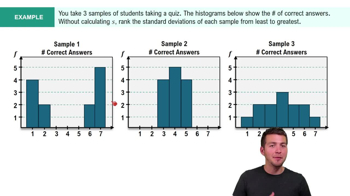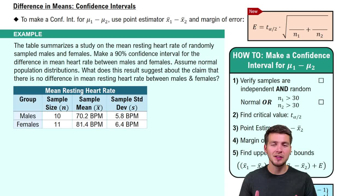Here are the essential concepts you must grasp in order to answer the question correctly.
Rank Sums
Rank sums are a statistical method used to analyze ordinal data by assigning ranks to data points and summing these ranks for different groups. In the context of paired data, each pair is ranked, and the sums of these ranks are calculated separately for each group. This method is particularly useful in non-parametric tests, such as the Wilcoxon signed-rank test, where the focus is on the ranks rather than the actual data values.
Recommended video:
Calculating Standard Deviation Example 1
Paired Data
Paired data refers to two sets of related observations, where each observation in one set is uniquely matched with an observation in the other set. This type of data is often used in experiments where the same subjects are measured under different conditions, allowing for a direct comparison. Analyzing paired data helps control for variability between subjects, making it easier to detect differences due to the treatment or condition being tested.
Recommended video:
Visualizing Qualitative vs. Quantitative Data
Nonzero Differences
Nonzero differences in paired data indicate that there is a measurable change or effect between the two conditions being compared. When analyzing paired data, it is essential to focus on these differences, as they provide the basis for statistical tests. The presence of nonzero differences allows for the calculation of rank sums and other statistics, which can help determine if the observed changes are statistically significant.
Recommended video:
Difference in Means: Confidence Intervals






